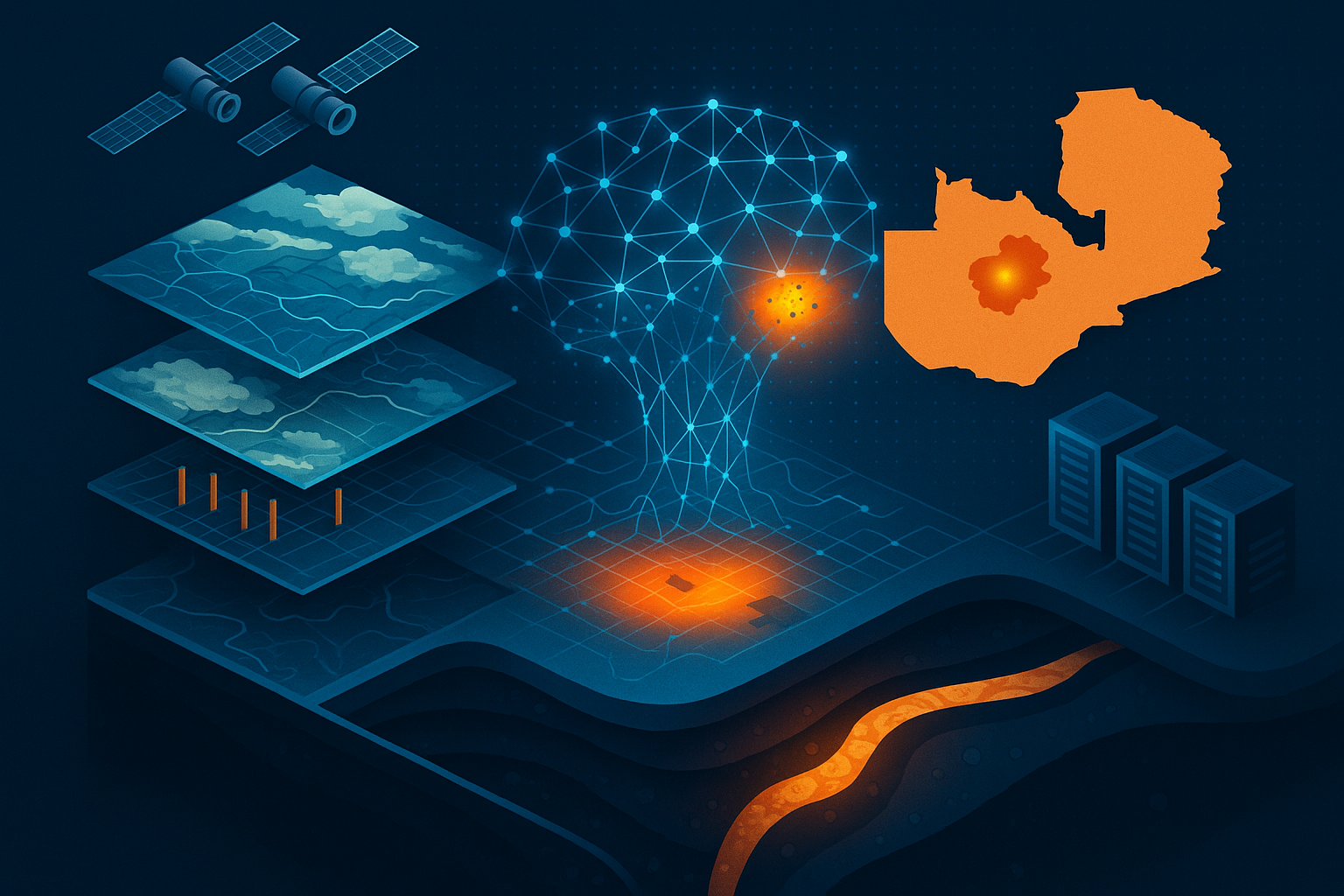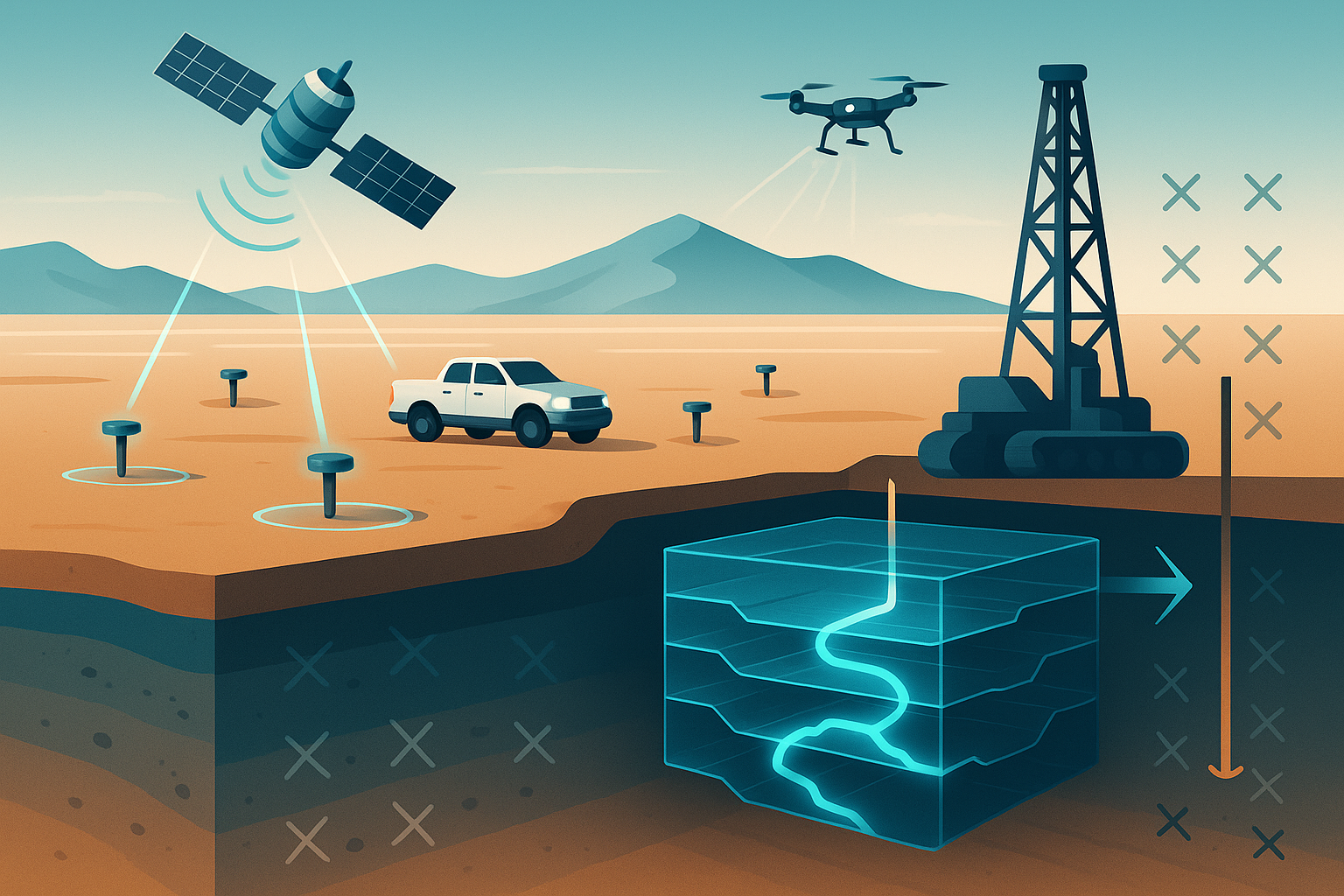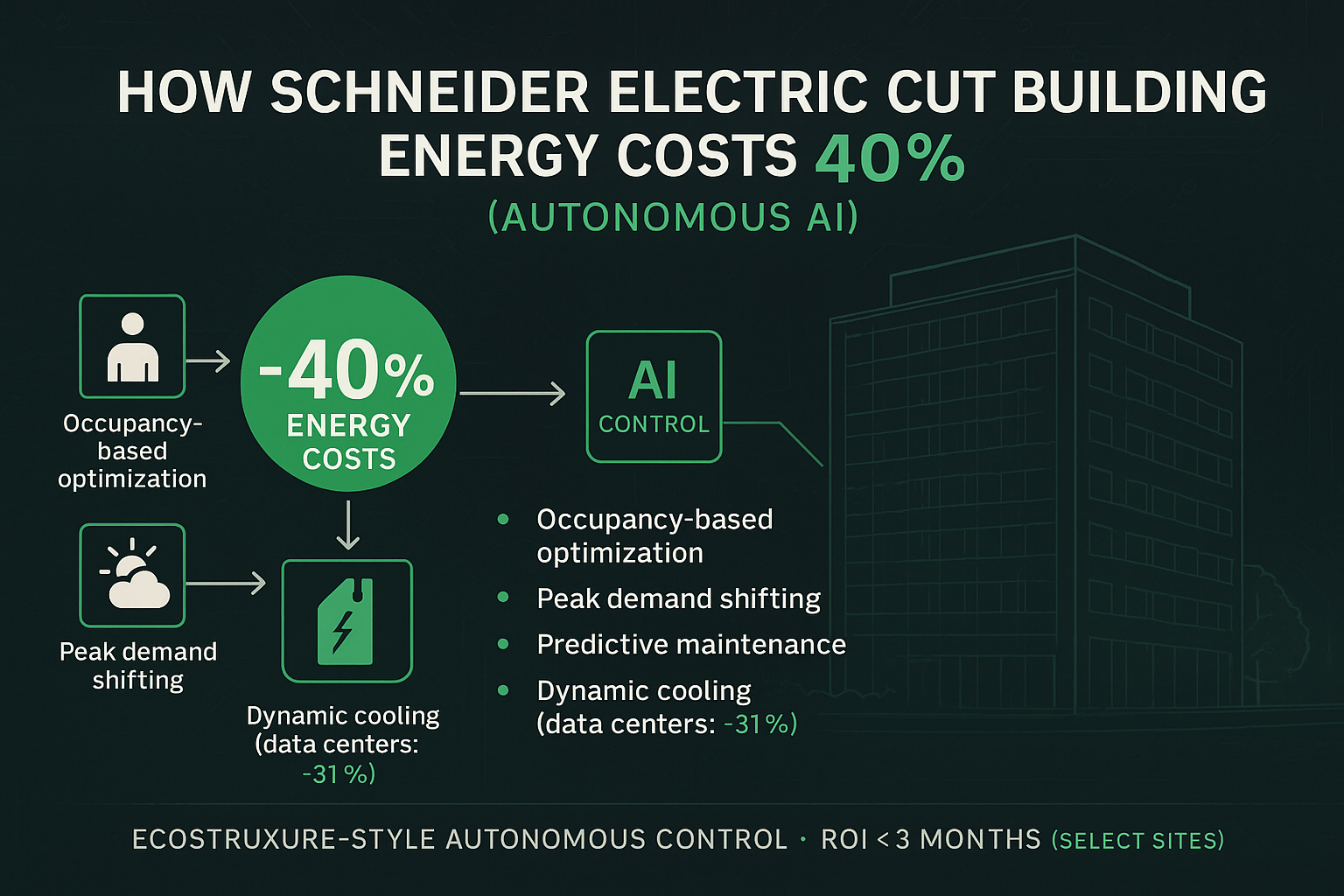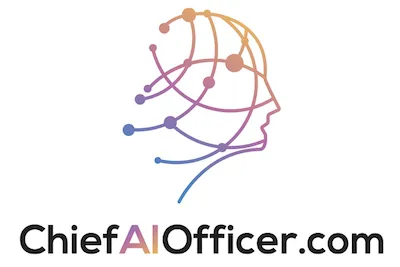Bill Gates and Jeff Bezos don’t typically invest in mining exploration companies. They backed Kobold Metals with $537 million because the company’s AI discovered a massive copper deposit in Zambia that traditional exploration completely overlooked. The Mingomba deposit projects 300,000 tonnes of annual copper production by 2030, supplying critical materials for electric vehicle batteries and energy infrastructure.
Here’s what makes this remarkable: experienced geologists had explored this region for decades without recognizing the deposit’s potential. Kobold’s AI analyzed a century of geological data, satellite imagery, geochemical surveys, and field reports, identifying patterns invisible to human analysis that pointed precisely to where high-grade copper mineralization existed.
The counterintuitive insight? The bottleneck in mineral exploration was never lack of data. Geological surveys, drilling records, and geochemical analyses have accumulated for over 100 years. The bottleneck was human inability to process and recognize patterns across this massive, multidimensional dataset. AI doesn’t find minerals by being smarter than geologists. It finds them by analyzing far more data than any human could ever examine.
The Hidden Data Problem
Global mineral exploration has generated extraordinary amounts of data over the past century: millions of drill hole records, decades of satellite imagery, countless geochemical analyses, geological maps covering entire continents, and academic research documenting mineral deposits worldwide. This information exists in disparate databases, paper archives, academic publications, and company files scattered across institutions and countries.
Traditional exploration uses tiny fractions of available data because human geologists can’t possibly review it all. An exploration geologist planning where to explore for copper might examine geological maps of the region, review known nearby deposits, analyze recent geochemical surveys, and consult academic literature about similar geological settings. This might involve reviewing hundreds of documents and datasets.
That sounds comprehensive until you realize that potentially relevant information exists in thousands of other sources: drill results from failed exploration programs decades ago, geophysical surveys conducted for different purposes, satellite data showing subtle surface features, or academic papers describing mineral systems in apparently unrelated geological environments. No human can systematically review all potentially relevant information across global datasets spanning a century.
The result is systematic under-utilization of existing knowledge. Valuable insights sit buried in old drilling records that nobody has reviewed in 40 years. Satellite imagery contains subtle signatures of mineralization that human interpreters miss because they’re looking for different features. Geochemical patterns that would indicate valuable deposits get overlooked because the original surveys targeted different minerals.
Kobold Metals recognized that the constraint in modern mineral exploration isn’t lack of data or geological understanding. It’s human cognitive limitations in processing the massive, multidimensional datasets that already exist. Their solution: build AI systems capable of analyzing all available data simultaneously, identifying patterns that predict mineral deposits with accuracy exceeding traditional human-driven exploration.
The TerraShed and Machine Prospector Platforms
Kobold developed two proprietary AI platforms that work together to revolutionize mineral exploration. TerraShed processes and integrates diverse geological datasets, creating comprehensive subsurface models. Machine Prospector analyzes these integrated datasets to identify high-probability exploration targets.
TerraShed functions like a massive data integration and visualization engine. It ingests geological maps, geophysical surveys, geochemical analyses, drilling records, satellite imagery, topography, climate data, and dozens of other data types. The platform standardizes these diverse formats, aligns them spatially and temporally, and creates unified representations of geological information across large regions.
This integration alone provides value because it makes previously siloed data accessible together. A geologist can examine how geochemical patterns correlate with geological structures visible in satellite imagery, or how historical drilling results relate to modern geophysical surveys. Connections that were impossible to see when data lived in separate systems become apparent when everything integrates into a single platform.
Machine Prospector takes this integrated data and applies machine learning to identify patterns associated with valuable mineral deposits. The AI trains on known deposits worldwide, learning what combinations of geological features, geochemical signatures, structural patterns, and other indicators predict mineralization. It then applies these learned patterns to unexplored or under-explored regions, highlighting areas with similar characteristics to known productive deposits.
The key innovation is that Machine Prospector doesn’t just match obvious similarities. It identifies subtle, multidimensional patterns that correlate with mineralization but that human geologists would never recognize because the pattern involves complex interactions between dozens of variables. The AI might discover that copper deposits in a particular geological setting correlate with specific combinations of rock chemistry, structural orientation, proximity to certain rock types, elevation patterns, and vegetation signatures visible in satellite imagery.
I’ve seen similar pattern recognition breakthroughs in medical diagnostics where AI identified disease indicators from combinations of symptoms and test results that individual doctors would never recognize because the pattern requires simultaneously considering too many variables. The AI doesn’t know more medical science. It can process more information simultaneously.
The Mingomba Discovery Story
The Mingomba copper deposit in Zambia represents Kobold’s highest-profile success and validates their AI-driven approach. This wasn’t a completely unexplored region. Geologists had worked in Zambia’s copper belt for over a century, given its status as one of Africa’s major copper-producing regions. Yet somehow, Mingomba’s potential went unrecognized until Kobold’s AI analysis identified it as a high-priority target.
Traditional exploration in the region focused on geological settings matching known productive deposits. Geologists looked for visible surface indicators, favorable rock types, and structural features associated with existing mines. This pattern-matching approach works well for finding deposits similar to those already known but systematically misses deposits in slightly different geological settings or lacking obvious surface expression.
Kobold’s AI analyzed the region without preconceptions about what copper deposits “should” look like. It examined all available data about geology, geochemistry, structure, and other factors, identifying Mingomba as having a unique combination of features that correlated with copper mineralization potential despite not matching the typical profile exploration geologists targeted.
The company’s drilling confirmed the AI’s prediction: a high-grade copper deposit with sufficient size and quality to justify mine development. By 2030, Mingomba expects to produce 300,000 tonnes of copper annually, contributing meaningfully to global supply of this critical mineral for electric vehicles and renewable energy infrastructure.
The economic value is substantial. At current copper prices around $9,000 per tonne, 300,000 tonnes annually represents $2.7 billion in annual production value. Over a 20-year mine life, that’s $54 billion in copper production from a deposit that traditional exploration methods completely missed despite a century of regional exploration activity.
The 60 Projects Global Expansion
Kobold isn’t relying on a single discovery to validate their approach. They’re operating over 60 exploration projects across North America, Africa, and Australia, targeting copper, lithium, nickel, and cobalt—the critical minerals for battery production and energy transition.
This portfolio approach makes strategic sense for several reasons. Mineral exploration inherently involves high failure rates. Even with superior technology, most exploration projects won’t result in economic discoveries. Operating 60 projects simultaneously provides diversification where a few major discoveries can justify the costs of many unsuccessful programs.
The geographic and commodity diversity also allows Kobold to test and refine their AI across varied geological settings and deposit types. Machine learning models improve through exposure to diverse training examples. Exploring for copper in Zambia, lithium in Canada, and nickel in Australia provides far more geological diversity than focusing on a single commodity in one region.
Each exploration program generates new data that improves the AI platforms. Drilling results validate or refine the AI’s predictions, teaching it which patterns truly indicate mineralization and which are false positives. This creates a feedback loop where the platforms become more accurate with each project, compounding advantages over time.
The scale of operations also provides economic leverage. Kobold can deploy their AI platforms across 60 projects for essentially the same platform costs as analyzing a single project. Traditional exploration requires proportional increases in geologist time for each additional project. AI-driven exploration has high fixed costs for platform development but near-zero marginal costs for analyzing additional properties.
The Real-Time Adaptation Capability
One of Kobold’s most powerful capabilities is real-time model updating as new field data emerges during exploration programs. Traditional exploration operates in discrete phases: plan exploration, execute fieldwork, analyze results, plan next phase. Each iteration takes weeks or months.
Kobold’s AI platforms ingest new data continuously as it’s collected, immediately updating subsurface models and exploration recommendations. A drill hole that encounters unexpected rock types gets incorporated into the geological model within hours, potentially altering recommendations about where to drill next.
The lithium exploration example illustrates this capability’s value. During fieldwork in a lithium exploration program, the team encountered white surface features they initially interpreted as potential lithium indicators. Traditional exploration would require sending samples to laboratories, waiting weeks for results, then reconvening the team to discuss findings and plan adjustments.
Kobold’s AI immediately incorporated the new observations, compared them against vast datasets of similar features, and flagged that the white surface appearance was more consistent with lichen growth than lithium mineralization. This real-time correction prevented wasting weeks of drilling on false targets, redirecting effort to more promising areas identified through the updated model.
This adaptive capability creates dramatic efficiency improvements. Traditional exploration might execute a phase based on initial understanding, discover the assumptions were partially wrong, then wait months before the next phase can implement corrections. AI-driven exploration corrects course continuously, avoiding wasted effort on directions the updated model no longer supports.
The Billionaire Backing Significance
Bill Gates, Jeff Bezos, and other high-profile investors committing $537 million to Kobold Metals provides more than just capital. It signals sophisticated investors’ belief that AI-driven mineral exploration represents a fundamental technological shift rather than incremental improvement.
These investors don’t typically back mining companies. They invest in technology platforms that can scale and transform industries. Their involvement suggests they view Kobold not as a mining company that happens to use AI but as a technology platform that will reshape how mineral exploration works globally.
The capital enables aggressive expansion. Mineral exploration requires substantial upfront investment before any revenue generation. Companies must acquire exploration properties, conduct geological surveys, drill extensively, and analyze results over multiple years before confirming discoveries justify mine development. This capital-intensive process traditionally required conservative exploration strategies focused on highest-probability targets.
Kobold’s funding enables more ambitious exploration. They can test their AI across diverse geological settings, explore properties that traditional economics wouldn’t justify, and accumulate the extensive data required to continuously improve their platforms. The investors are essentially funding the creation of a proprietary geological database and machine learning infrastructure that becomes more valuable over time.
The backing also provides credibility that helps Kobold form partnerships with established mining companies. BHP and BlueJay Mining’s collaborations likely happened partly because Gates and Bezos’ involvement signals serious technical and strategic value rather than just another junior exploration company with hyped technology.
The “Google Maps for Underground” Vision
Kobold’s stated goal of creating “Google Maps” for underground mineral deposits reveals their ultimate ambition: comprehensive subsurface knowledge accessible through intuitive interfaces that make mineral exploration dramatically more efficient globally.
Google Maps transformed navigation not by making roads better but by making comprehensive route information instantly accessible. Before Google Maps, planning a trip required physical maps, printed directions, local knowledge, and considerable effort. Google Maps made all available navigation information accessible instantly through simple interfaces.
Kobold aims for similar transformation in mineral exploration. The geological data exists. The challenge is making it accessible and interpretable. Their platforms integrate global geological information, apply AI to extract meaningful patterns, and present insights through visualizations that communicate complex subsurface interpretations clearly.
The vision extends beyond just helping Kobold find deposits. A mature version of this platform could provide the global mining industry with unprecedented ability to identify exploration targets, reducing the time and capital required to find critical minerals. This democratization of exploration knowledge could accelerate mineral discovery globally, particularly important as demand for battery metals increases dramatically.
The business model might eventually include licensing their platforms to other exploration companies, creating recurring revenue beyond just discoveries Kobold makes themselves. This would mirror how Google monetized their mapping technology beyond just internal use.
The Critical Minerals Strategic Context
Kobold’s focus on copper, lithium, nickel, and cobalt reflects strategic targeting of the minerals most critical for global energy transition. Electric vehicle batteries require substantial lithium, nickel, and cobalt. Renewable energy infrastructure demands enormous copper quantities for wiring and electrical systems. Grid-scale energy storage needs even more battery minerals.
Current supply of these minerals falls dramatically short of projected demand as the world transitions from fossil fuels. The International Energy Agency estimates that mineral demand for clean energy technologies will increase 4-6 times by 2040 under current policy scenarios. Meeting these demands requires discovering and developing substantial new mineral deposits.
Traditional mineral exploration timelines create serious supply challenges. From initial discovery through mine development to production typically takes 10-15 years for major deposits. If we’re discovering deposits today, they won’t contribute meaningfully to supply until the mid-2030s at earliest. We needed to discover tomorrow’s mines yesterday.
Kobold’s AI-accelerated exploration directly addresses this timing challenge. If AI can compress exploration timelines by identifying high-quality targets faster, the industry can discover and develop deposits on timeframes that match energy transition demands. The Mingomba discovery moving from exploration to projected production in roughly a decade represents the accelerated development possible when exploration succeeds quickly.
The strategic value of controlling critical mineral supplies explains why billionaires interested in energy transition invest in exploration technology. Securing minerals enables the broader transition to electric vehicles and renewable energy. Bottlenecks in mineral supply could slow or derail energy transition regardless of battery or solar panel technology improvements.
The Skepticism and Transparency Questions
Not everyone accepts Kobold’s narrative uncritically. Industry observers note that previous attempts at digital mineral exploration produced mixed results, with some companies over-promising and under-delivering on AI capabilities. Skeptics question whether Kobold’s technology represents genuine breakthroughs or primarily marketing innovation.
The transparency concerns focus on limited public information about exactly how their AI works, which makes independent verification difficult. Proprietary technology protection is understandable, but it also means the industry must largely trust Kobold’s claims about their methods and results rather than evaluating them independently.
Some traditional geologists express skepticism that AI can truly outperform experienced human geological judgment, particularly given that mineral deposits form through complex geological processes that might not reduce to algorithmic pattern recognition. They argue that geological expertise and intuition remain essential for discovery.
These concerns deserve consideration but shouldn’t dismiss the fundamental value proposition. Even if Kobold’s AI doesn’t revolutionize exploration as dramatically as their marketing suggests, making meaningful improvements in exploration efficiency delivers substantial value. If AI helps geologists review more data, test hypotheses faster, or avoid obvious mistakes, it provides ROI without necessarily transforming the entire industry.
The Mingomba discovery provides concrete evidence that their approach delivers results regardless of how revolutionary the underlying technology is. Whether the AI found that deposit through breakthrough algorithmic innovation or simply more systematic data analysis than traditional methods, the outcome remains: they discovered a major copper deposit that others missed.
The Partnership Strategy Significance
Kobold’s collaborations with established mining companies like BHP represent smart strategy for a technology-focused exploration company. Kobold brings AI platforms and exploration targeting expertise. Partners bring operational experience, mining infrastructure, regulatory relationships, and capital for mine development.
This partnership model allows Kobold to participate in more projects than they could develop independently. Rather than needing to fund entire mine development themselves, they contribute exploration expertise in exchange for ownership stakes or royalties. Partners get access to superior exploration technology while Kobold maintains focus on their core capability: AI-driven exploration.
The partnerships also provide valuable feedback for improving their AI platforms. Working with experienced mining companies exposes Kobold to real operational challenges, regulatory constraints, and practical considerations that pure technology companies might overlook. This interaction between cutting-edge AI and traditional mining expertise likely produces better results than either approach alone.
BHP’s involvement particularly matters given their status as one of the world’s largest mining companies. Their partnership signals that sophisticated industry leaders view Kobold’s technology as credible and valuable rather than dismissing it as unproven startup hype.
The Environmental Advantage Potential
AI-driven exploration that reduces drilling requirements offers meaningful environmental benefits. Each drill hole requires site preparation, equipment mobilization, and subsequent reclamation. Extensive drilling campaigns disturb substantial land areas, particularly in sensitive environments.
If Kobold’s AI identifies high-quality targets with fewer exploratory drill holes, the environmental footprint of exploration decreases. Drilling 20 precisely targeted holes creates far less disturbance than drilling 100 holes across a broader area through trial-and-error exploration.
The improved targeting also reduces wasted effort on properties with no economic potential. Traditional exploration might drill extensively on properties that ultimately prove non-viable, disturbing land that produces no value. AI that better predicts which properties have genuine potential reduces this unproductive environmental impact.
These environmental advantages increasingly matter as mining faces growing scrutiny and regulatory pressure regarding ecological impact. Companies that demonstrate superior environmental performance in exploration potentially gain advantages in permitting, community relations, and social license to operate.
The Talent and Organizational Challenge
Kobold must balance two very different cultures: Silicon Valley technology development and traditional mining industry expertise. This cultural integration challenges many companies attempting to bring AI to established industries.
Technology talent focuses on rapid iteration, software development, and algorithmic innovation. Mining professionals emphasize geological understanding, operational experience, and risk management. These cultures often clash around decision-making timelines, acceptable failure rates, and how to evaluate success.
Kobold apparently manages this tension by maintaining strong teams in both areas. Their geologists provide domain expertise ensuring the AI targets geologically reasonable explanations rather than finding spurious patterns in data. Their technology team provides tools that amplify rather than replace geological expertise.
The companies that successfully bridge technology and traditional industries typically achieve this through mutual respect where each discipline recognizes the other’s essential contributions. Technology alone can’t find minerals. Geological expertise alone can’t process vast datasets efficiently. Success requires genuine integration rather than one side dominating.
The Competitive Landscape Evolution
Kobold’s success will inevitably attract competition. Other exploration companies will invest in AI capabilities, technology companies will enter mineral exploration, and established mining giants will build internal AI expertise. The question is whether Kobold can maintain advantages as competition intensifies.
Their primary moat likely comes from proprietary data and accumulated learning rather than algorithmic superiority. The geological database they’ve assembled and the training their AI has received from 60+ projects represents substantial investment difficult for newcomers to replicate quickly.
The partnerships with major mining companies also create barriers. Once BHP invests in working with Kobold and integrating their platforms into exploration workflows, switching costs make it challenging for competitors to displace them even with comparable technology.
The talent concentration matters too. If Kobold establishes themselves as the leading AI exploration company, they’ll attract top talent in both geology and AI, creating human capital advantages beyond just their technology platforms.
Your Strategic Response Path
For exploration companies, Kobold’s success creates strategic questions about how to respond. Building comparable internal AI capabilities requires substantial investment and specialized talent. Partnering with Kobold or competitors provides faster access but potentially creates dependencies on external platforms.
For mining companies considering where to explore, AI-driven targeting increasingly looks like table stakes rather than optional enhancement. As more companies adopt these approaches, those relying purely on traditional methods face growing disadvantages in discovery rates and exploration efficiency.
For investors evaluating exploration companies, AI capabilities become an important assessment criterion. Companies with sophisticated data analysis and machine learning capabilities likely achieve better exploration results than those without, all else equal.
The key is recognizing that AI in mineral exploration represents a genuine capability shift rather than just marketing hype. When billionaires invest hundreds of millions based on technology assessment by their advisors, dismissing it as overhyped seems unwise.
The Future of Mineral Discovery
Mineral exploration is transitioning from human-guided investigation to AI-accelerated discovery. The companies that master this transition will find the deposits that power global energy transition. Those that maintain purely traditional approaches will find fewer discoveries while spending more capital.
Kobold proved that AI can find major mineral deposits that experienced geologists missed. Whether their technology represents total transformation or meaningful improvement, the direction is clear: AI will increasingly guide where the industry explores and what discoveries it makes.
Finding 300,000 tonnes of annual copper production that others missed isn’t just impressive technology. It’s a demonstration that we’ve been leaving valuable discoveries on the table because humans couldn’t process all available information.
That’s what changes industries.




